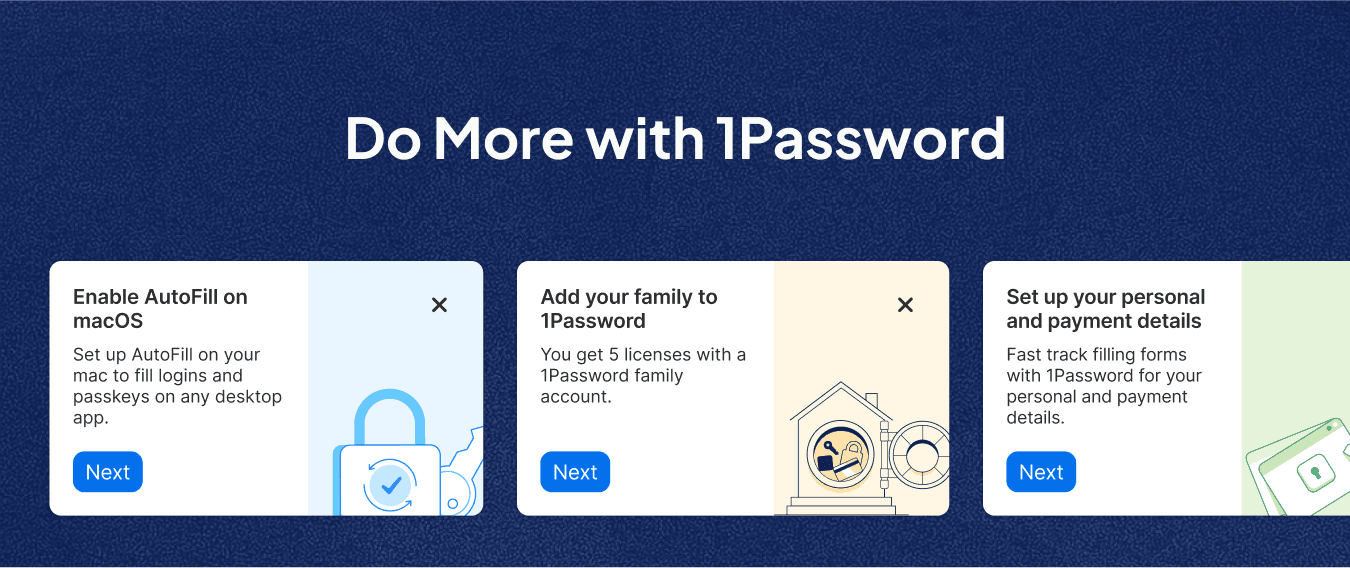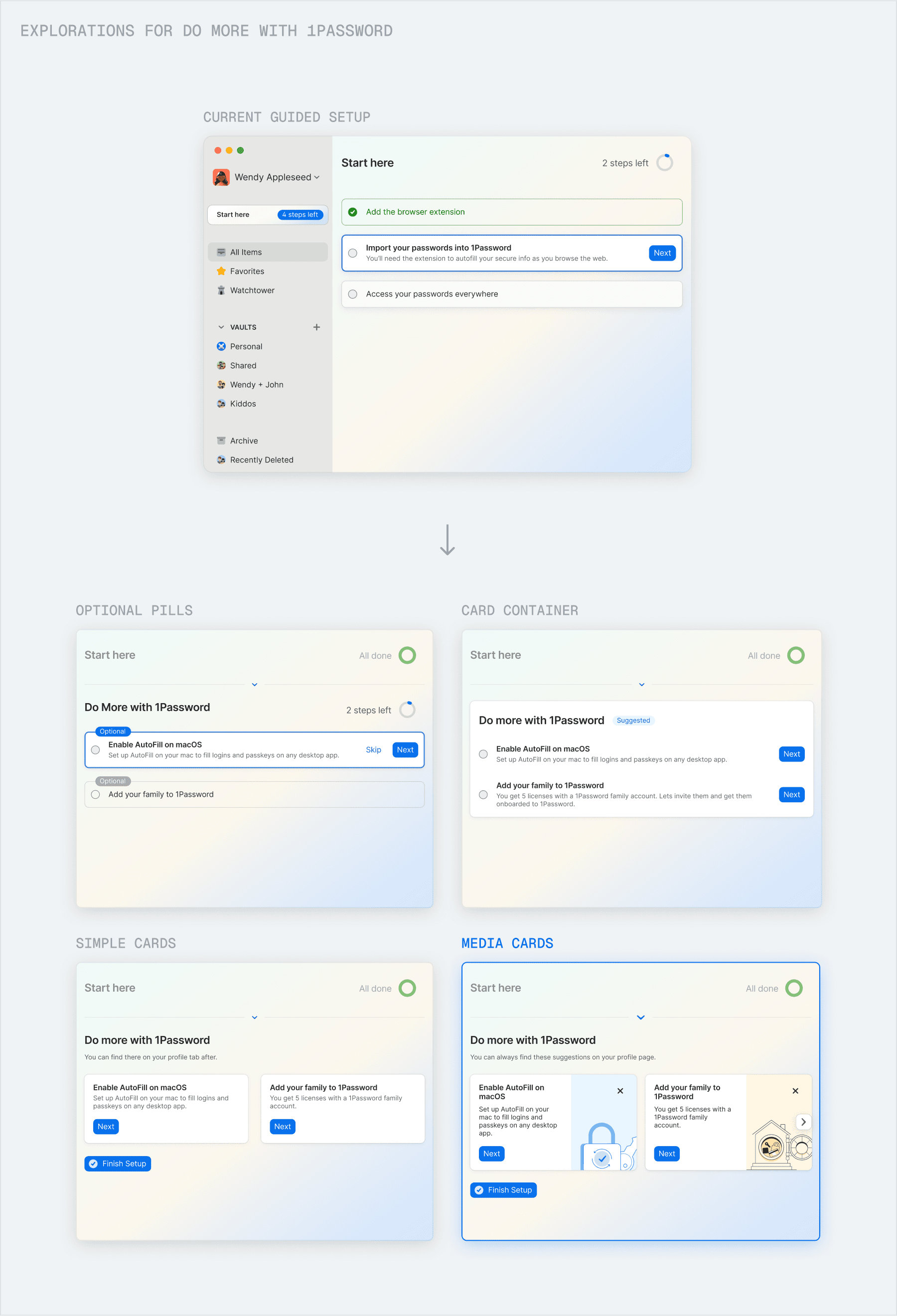1Password • Shipped 2025
Bringing autofill to macOS
Role
Product Design Intern
Timeline
Jan - April 2025
Team
Product Manager
Engineering Manager
Skills
User Research
Competitive Analysis
Prototyping
Overview
1Password is a password manager, where millions of users keep their life’s secrets.
Logins, payment details, and sensitive personal information—these secrets that users trust to be there the moment they need it, wherever that may be: browser, iOS and Android, windows...

Problem
Native macOS autofill is not supported on 1Password...
Users don’t get the password they need on native macOS desktop apps, which means trust is broken with users. This feature was table stakes to retain trust with users.
...but it’s not easy when you don’t own the operating system!
Operating in Apple’s ecosystem means dealing with the complexities and constraints of macOS, and that means doing a lot of explorations and making a lot of tradeoffs for difficult systems problems.
Onboarding Users
Where is the entry point to setting up macOS autofill?
The key question was now how do users discover this setting? There were many possible entry points:
Entry Points
Onboarding Modals
These modals are shown to users when they first opened the 1Password app, and here we could direct users to the macOS autofill feature.
Onboarding Modals
These modals are shown to users when they first opened the 1Password app, and here we could direct users to the macOS autofill feature.
Guided Setup
Guided Setup is a series of mandatory steps for new users. Here we could have optional setup steps.
Guided Setup
Guided Setup is a series of mandatory steps for new users. Here we could have optional setup steps.
Core Product
The core product is where users land regularly in 1Password. Here we could have a many different entry points to macOS autofill.
Core Product
The core product is where users land regularly in 1Password. Here we could have a many different entry points to macOS autofill.
Solution
Do More with 1Password
These are suggested setup steps for features like macOS autofill. This is a new addition to the system that I designed, recognizing that there are many other features that would be valuable to have suggestions for.

For this, I did an additional round of design exploration:

Reaching both new and existing users
New users would easily see this feature in the guided setup, and existing users would see these cards living uninstrusively in the home page of the core product.
Final Flow
Discovering & setting up macOS autofill:
Reflection
What I learned
The simplest designs hold a lot of complexity.
My job as a designer is to explore the complexity and bring simplicity to users. Elegant solutions require a lot of exploration and iteration.
Flows aren't always perfect because the tech isn't always perfect.
Technical constraints with API availability and conflicting applications were inevitable. The user flow couldn't be perfect, but we had to work with it.





